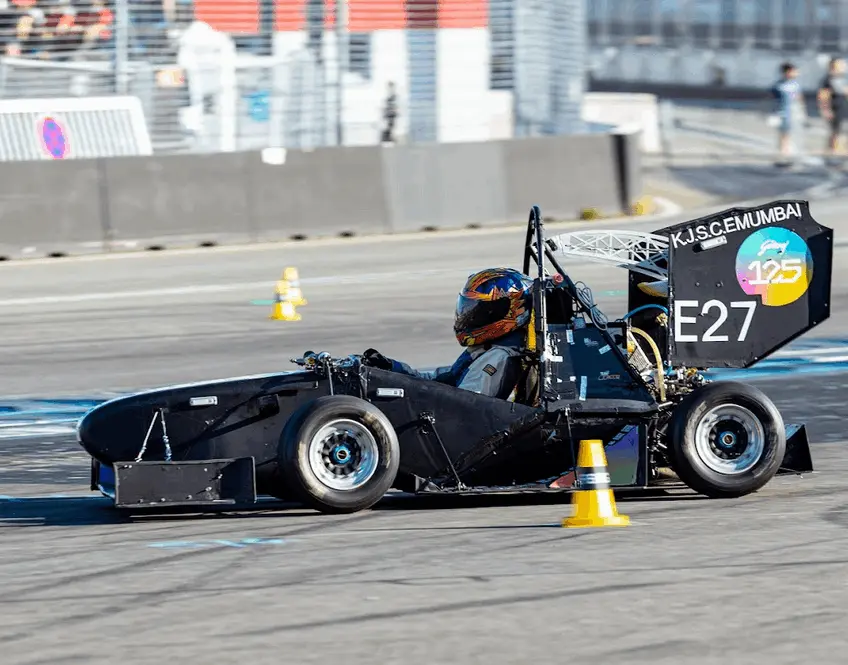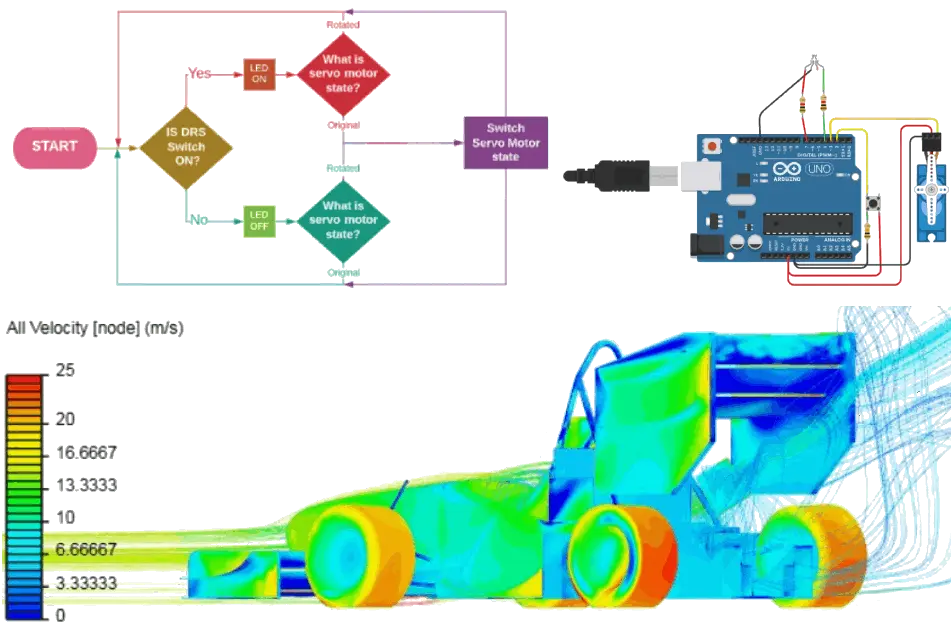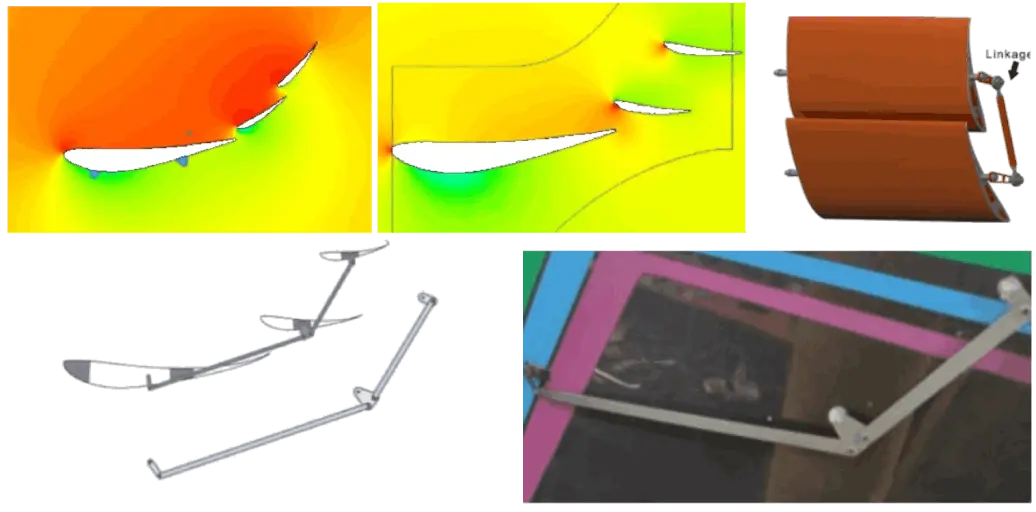Results
After extensive CFD simulations and taking help from the multi wing theory, the following configuration (A) was fixed for the rear winglets arrangement. A three wing configuration was used. And the wings have angles of 0°, 21°, 52° respectively. This helps achieve maximum downforce. But it also produces a lot of drag. Because of which, another CFD based optimization by changing winglet angles was performed to optimize for reduction in drag value. And configuration (B) was obtained with winglet angles close to 0°, -5°, -3°. Drag was found to be significantly reduced when configuration (B) was used over configuration (A) although it meant there wasn’t enough downforce.
The DRS system can be actuated either via a pneumatic system, hydraulic system, an electro mechanical system or simply a servo based electronic system. In this project we implemented it via servos that will be used in combination with a control board to help with the functioning of the DRS system. A linkage based actuation mechanism is attached along the endplates which will be operated by the servo motors. That will eventually tilt the winglets along a fixed hinge on the chord of the airfoil, thus helping achieve the required angles for the DRS system.



